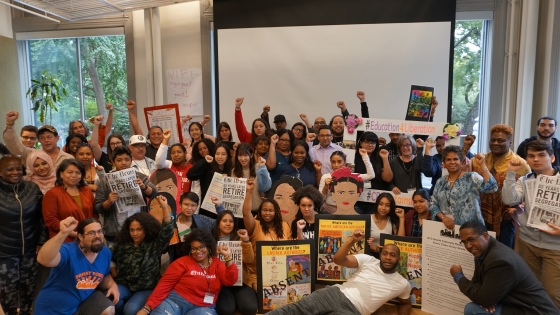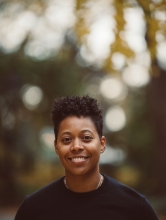Flor Khan, Dr. Leah Q. Peoples, and Parker Foster
Debates about public school curriculum may be as old as public schools themselves. Curriculum is one of the most essential aspects of schooling; it is the GPS of the classroom, determining where the teacher is going, which vehicle they use to get there, and what route to take. By shaping the content and the skills that students learn, curriculum reflects and shapes culture itself: the knowledge, beliefs, norms, and social behaviors that our schools encourage in the next generations.
Recently, curriculum has taken center stage in the public conversation about schooling. While there has been mass media coverage of these debates, there is a lack of substantive discussion on culturally responsive education – the educational approach that directly addresses issues of identity, culture, and power at the center of these debates. Our upcoming report, Lessons in (In)Equity: An Evaluation of Cultural Responsiveness in Elementary ELA Curriculum, set out to answer the question: just how culturally responsive are public school curricula?
We worked with a diverse team of public school parents, students and educators to analyze samples of curriculum from three of the nation’s most widely used elementary school English Language Arts (ELA) curricula - McGraw Hill’s Wonders, Savvas’ myView, and Houghton Mifflin Harcourt’s Into Reading - using Metro Center’s Culturally Responsive ELA Curriculum Scorecard.
This evaluation tool was created in 2018 in collaboration with the NYC Coalition for Educational Justice (CEJ), a New York City parent organizing group. CEJ requested NYU Metro Center’s support to evaluate racism and bias in their children’s curriculum. Both the ELA and the Science, Technology, Engineering, Arts, and Mathematics (STEAM) scorecard have been used by thousands of individuals and hundreds of schools and districts across the country and internationally, in at least 30 states and 3 countries.
Using this Scorecard, we found that the three ELA curricula, which collectively reach millions of students across the country, have deficits that are mostly not being raised in the current public debate about curriculum. Their texts, language, tone and guidance communicate harmful messages to students of all backgrounds, especially Black, Indigenous, students of color, LGBTQIA+ students, and students with disabilities.
This community research team found:
- All three curricula, McGraw Hill Wonders, Houghton-Mifflin-Harcourt IntoReading and Savvas myView, were Culturally Destructive or Culturally Insufficient. Curricula reinforced stereotypes, centered White or Eurocentric ideas or culture, and offered little guidance for teachers to connect curriculum to students’ lives.
- All three curricula used superficial visual representations to signify diversity, especially skin tone and bodily presentation, without including meaningful cultural context, practices, or traditions.
- All three curricula were dominated by one-sided storytelling that provided a single, ahistorical narrative.
- All three curricula used language and tone that demeaned and dehumanized Black, Indigenous and characters of color, while encouraging empathy and connection with White characters.
- All three curricula provided little to no guidance for teachers on engaging students’ prior knowledge, backgrounds, and cultures; or reflecting on their own bias, beliefs, and experiences.
Our research indicates that there is an urgent need for public school curriculum to:
- Represent full, complex characters from marginalized groups, so that students can have a more holistic understanding of themselves and others, and the skills to navigate the diverse society they are a part of;
- Shift the narrative from single to multiple perspectives that can give students the opportunity to comprehend and assess real-life situations from multiple viewpoints;
- Foster critical thinking and questioning of dominant narratives, so that students can play a role in creating new policies and practices for a more just society;
- Provide guidance for educators on bridging cultural gaps with their students and adapting curriculum to the cultures, backgrounds and experiences in their classroom;
- Bring youth, families, educators and community members into curriculum design, creation, piloting, and evaluation.
As the GPS of the classroom, curriculum prepares students to navigate both their academic learning and their role in the society at large. Major curriculum publishers are failing to integrate models of culturally responsive education that could advance student academic learning, build cultural competency for a diverse world, and develop critical thinking. These are essential building blocks that students will need to participate in a diverse and complex society, and to lead us to a more just and equitable world for generations to come.
Leah Q. Peoples, Ph.D., is an education based researcher, program evaluator, and consultant with Transformative Research LLC.



